SLVSGC5B January 2023 – May 2024 TPS62870 , TPS62871 , TPS62872 , TPS62873
PRODUCTION DATA
- 1
- 1 Features
- 2 Applications
- 3 Description
- 4 Description (continued)
- 5 Device Options
- 6 Pin Configuration and Functions
- 7 Specifications
-
8 Detailed Description
- 8.1 Overview
- 8.2 Functional Block Diagram
- 8.3
Feature Description
- 8.3.1 Fixed-Frequency DCS Control Topology
- 8.3.2 Forced PWM and Power Save Modes
- 8.3.3 Precise Enable
- 8.3.4 Start-Up
- 8.3.5 Switching Frequency Selection
- 8.3.6 Output Voltage Setting
- 8.3.7 Compensation (COMP)
- 8.3.8 Mode Selection and Clock Synchronization (MODE/SYNC)
- 8.3.9 Spread Spectrum Clocking (SSC)
- 8.3.10 Output Discharge
- 8.3.11 Undervoltage Lockout (UVLO)
- 8.3.12 Overvoltage Lockout (OVLO)
- 8.3.13 Overcurrent Protection
- 8.3.14 Power Good (PG)
- 8.3.15 Remote Sense
- 8.3.16 Thermal Warning and Shutdown
- 8.3.17 Stacked Operation
- 8.4 Device Functional Modes
- 8.5 Programming
- 9 Register Map
- 10Application and Implementation
- 11Device and Documentation Support
- 12Revision History
- 13Mechanical, Packaging, and Orderable Information
10.2.3 Application Curves

| VOUT = 0.4V |

| VOUT = 0.5V |

| VOUT = 0.75V |

| VOUT = 0.875V |

| VOUT = 1.05V |

| IOUT = 10A |
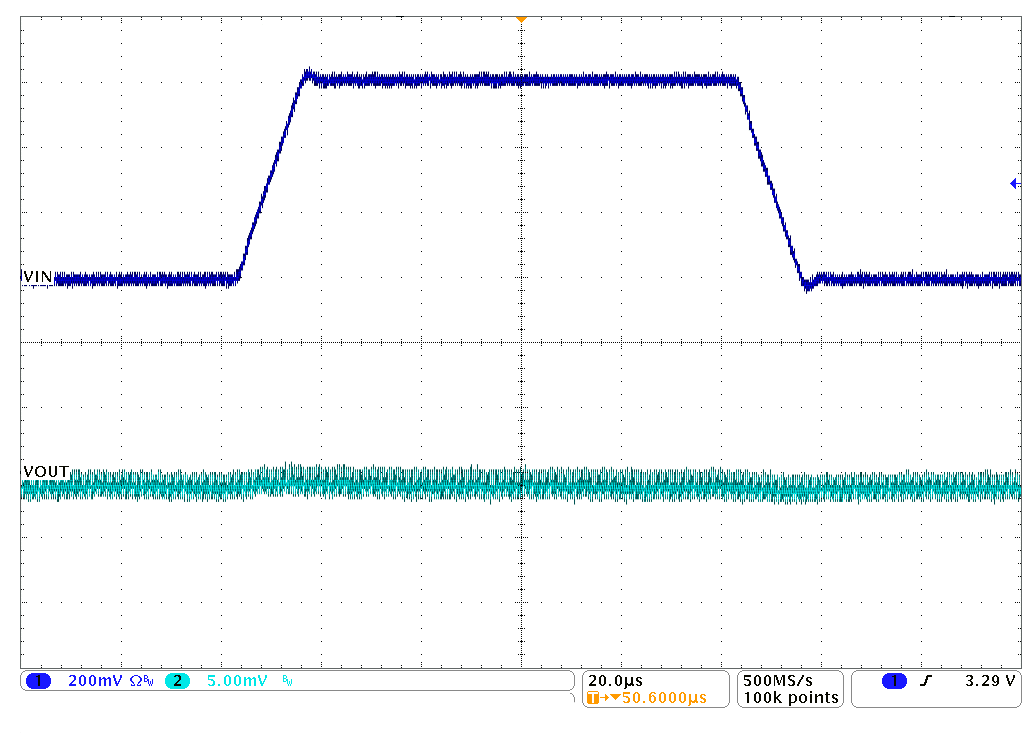 Figure 10-14 Line Transient Response
Figure 10-14 Line Transient Response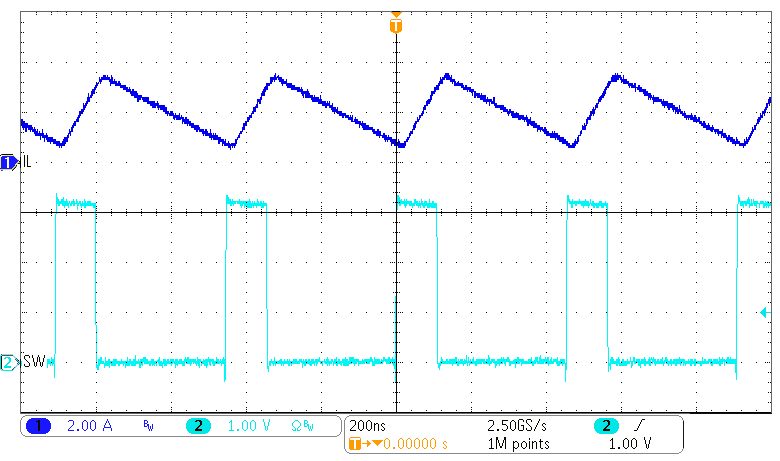
| IOUT = 2A |
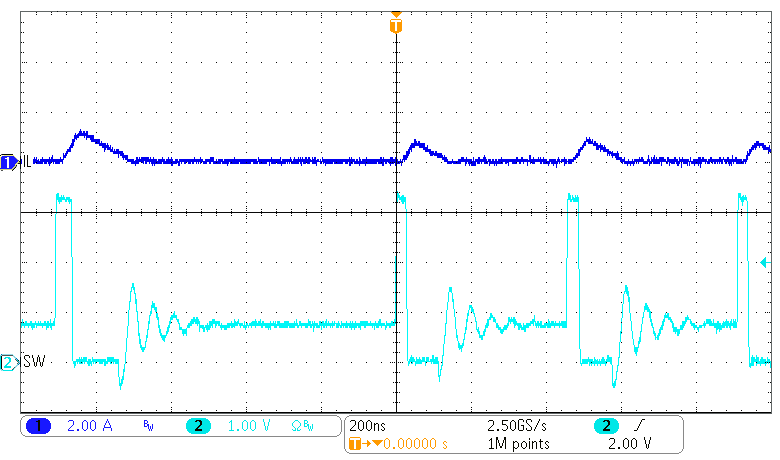
| IOUT = 75mA |
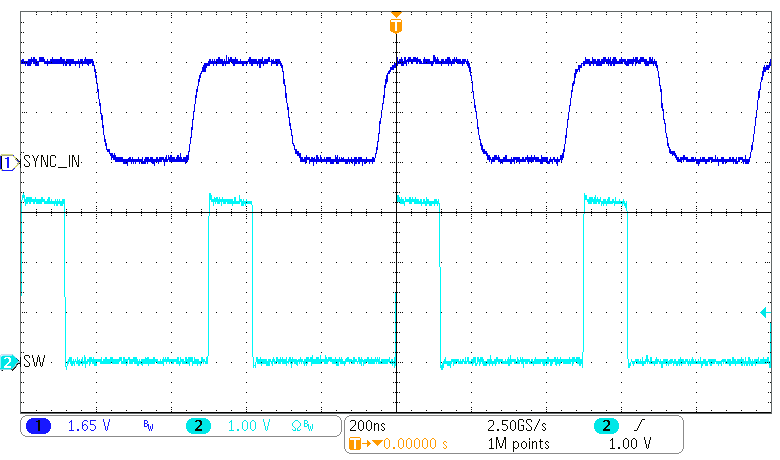
| Load = 0.75Ω | FSEL = 2.25MHz | f(SYNC) = 2MHz |
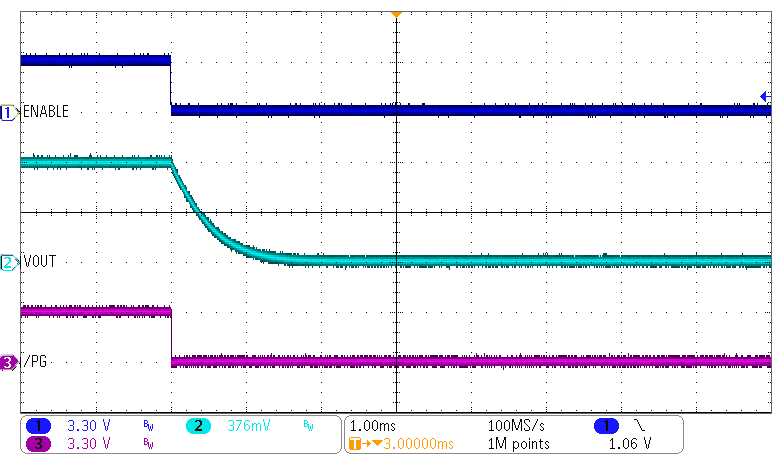
| Load = 7.5Ω |
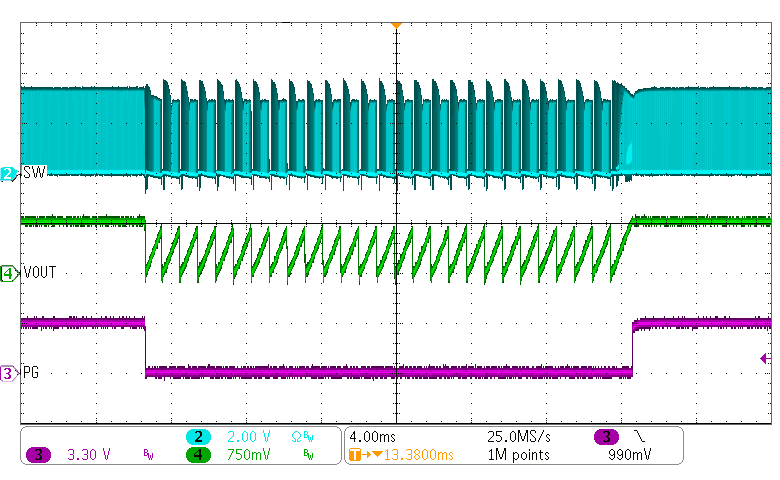 Figure 10-24 Current Limit (Hiccup)
Figure 10-24 Current Limit (Hiccup)
| VOUT = 0.4V |

| VOUT = 0.5V |

| VOUT = 0.75V |

| VOUT = 0.875V |

| VOUT = 1.05V |

| IOUT = 15A | VOUT = 0.875V |
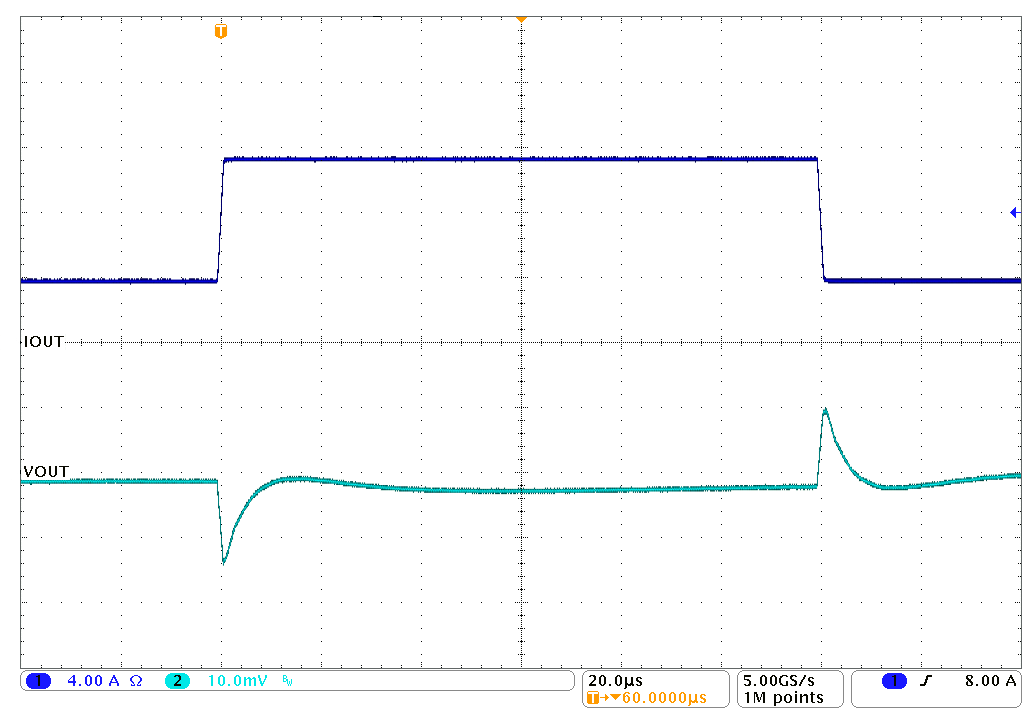
| ΔIOUT = 7.5A | CH1 = 50mV/A |
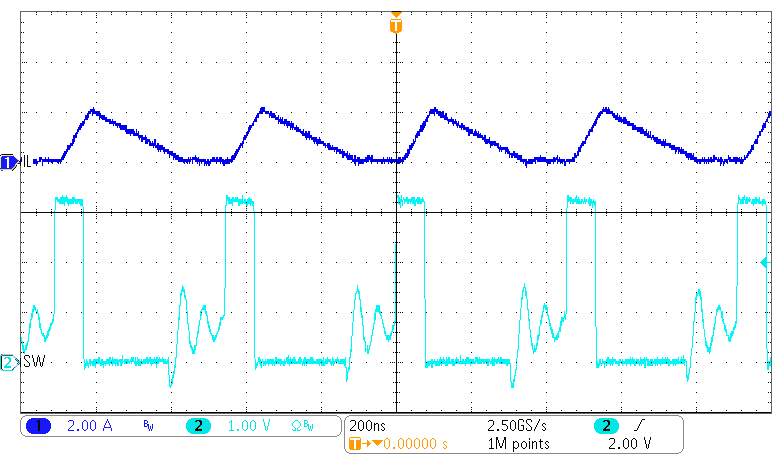
| IOUT = 750mA |

| VOUT = 0.75V | IOUT = 11.5A |
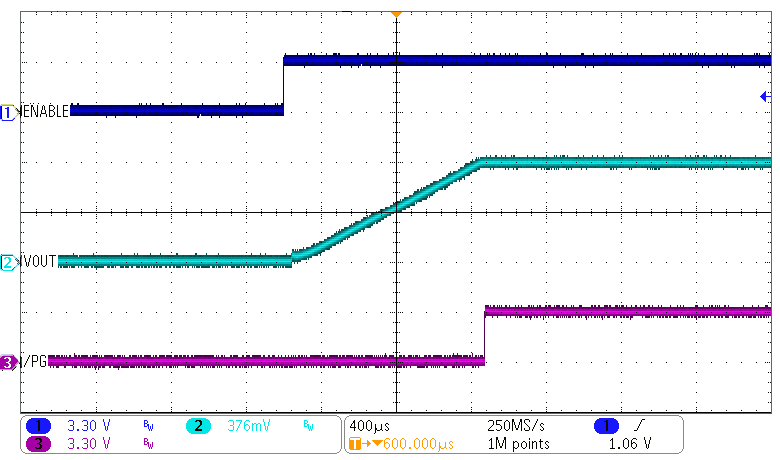
| Load = 0.75Ω |
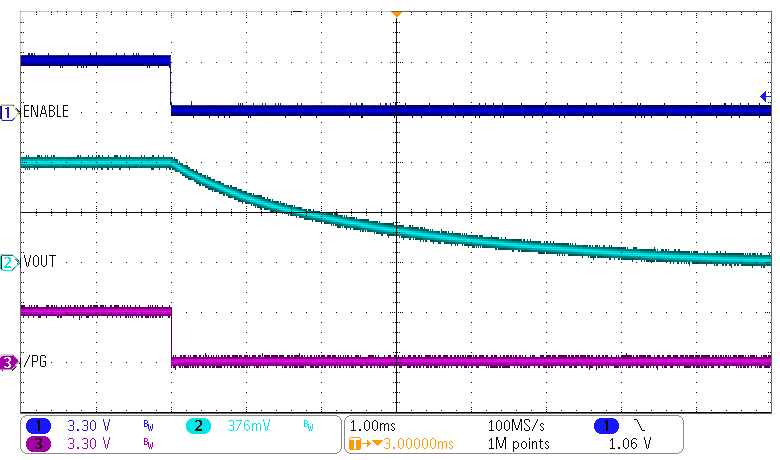
| Load = 7.5Ω |